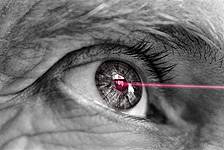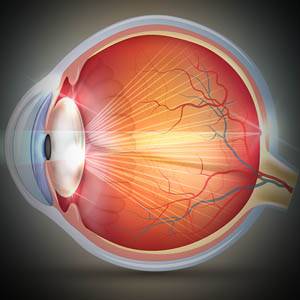In recent years, eye care professionals have been searching for new pharmaceutical options to offer their patients with presbyopia and demodex eyelid infestations, primarily as a result of the rapid rise in their global prevalence.
Here, we will discuss these eye conditions and the newest available treatments.
Vuity drops for presbyopia
With almost 2 billion people around the world living with presbyopia, an innovative treatment option for this condition is becoming essential.
Presbyopia is an age-related eye condition that causes near objects and images to appear blurry. It occurs when the lens of the eye begins to lose its flexibility, impacting its ability to focus on near objects and consequently causing blurred vision.
Symptoms of presbyopia typically begin around the age of 40 and can worsen over time, making it difficult to read books, restaurant menus and numbers or text on your phone.
Although optical lenses, contact lenses and laser refractive surgery are all effective ways to correct presbyopia, a pharmacological solution will enable patients to achieve near vision clarity without the need for eyewear or invasive surgical procedures.
Vuity (allergan) is the newest FDA-approved presbyopia drug on the market, with other medications such as UNR844 (Novartis), still in the pipeline.
How does Vuity work?
Vuity works by stimulating muscle contraction in the iris, the colored part of your eye that surrounds your pupil.
When the iris muscles contract, the pupil becomes smaller in size, which results in increased depth of field and improved near vision clarity.
These eye drops adjust to the natural pH of your tear film, so you shouldn’t experience any stinging or burning sensation after they are applied — though some people experience eye redness and headaches.
Following insertion, improved near vision is often noticed within about 15 minutes, but even greater results are usually experienced after around one hour. The effects of the eye drops typically last around six hours.
Optimal treatment results are generally noticed around two weeks after beginning treatment.
SEE RELATED: Guide to Eye Conditions
If you have an eye condition and would like to learn about the newest treatment options, contact an eye doctor near you.
Medications for demodex mites
An estimated 45 percent of people suffer from blepharitis, with most patients over age 60 afflicted by an underlying demodex infestation.
Blepharitis is a condition that causes severe eyelid inflammation, typically as a result of a blockage within the meibomian glands — the tiny oil glands that line the eyelid margins. In patients over 60, the most common cause of oil gland blockages is a demodex infestation.
The demodex mite is a parasite that lives in the hair follicles of your face and eyes, typically around the eyelids and eyelashes.
In small numbers, demodex mites can be beneficial for the skin, as they feed off of dead skin cells.
However, an infestation of demodex mites can lead to dry, red, and itchy skin, eczema, severe eyelid inflammation (blepharitis), meibomian gland dysfunction and eyelash damage.
Blepharitis can also cause any of the following ocular symptoms:
- Swollen eyelids
- Watery eyes
- Itchy eyes and eyelids
- Gritty eyes
- Burning or stinging in the eyes
- Yellow crust at the base of the eyelashes
- Sensitivity to light
- Blurry vision that typically improves with frequent blinking
New effective demodex treatments
Fortunately, recent research has uncovered a number of effective pharmaceutical treatments to treat demodex mites, including:
- Sarolaner (Tarsus Pharmaceuticals)
- Spinosad (APT-001, Aperta Biosciences)
- Ivermectin
- Selenium sulfide (Azura Ophthalmics)
If you suffer from dry eyes, you may have blepharitis caused by an infestation of demodex mites in your eyelids. Your eye doctor will determine which type of medication is best for your individual condition.
LEARN MORE: Primary Eye Care
Schedule an appointment with an eye doctor near you if you would like to learn more about the newest treatment options for presbyopia or demodex.









